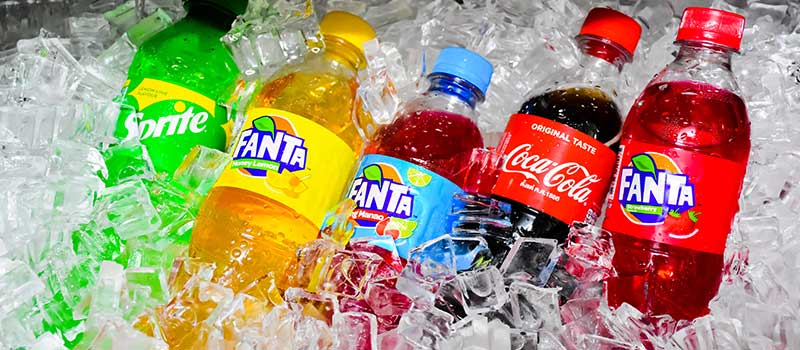In this article I’m with Professor Byron Sharp on how brands grow & what marketers don’t know.
Now Professor Byron Sharp is the Director of the Ehrenberg-Bass Institute for Marketing Science in South Australia and is renowned for his work on evidence-based marketing.
His book “How Brands Grow” has made a significant contribution to the field of marketing with both academics and practitioners and in our chat today we dive into
The Importance Of Physical & Mental Availability To Raise Brand Awareness
The Role Of The Primitive Brain In Decision Making
And How Smaller Brands Can Compete In Busy Markets
So, if you want to learn from an influential marketing professor who follows the science and evidence for how to grow brands… then stick around
Strategies for Small Business Owners and Startups

Stephen
How can small business owners compete with the overwhelming concepts of mass marketing and evidence-based marketing?
Specifically, regarding mental availability, how can startups ensure their brand is front and center and remains top of mind with consumers in their target market, especially considering the evolution of technology like the internet and AI?

Byron Sharp
In the competitive landscape of business, cutting through the noise and standing out is paramount.
Building a successful brand often hinges on creativity and innovation that catches the world's attention.
While having a quality product and talent is crucial, reaching people and working hard at it is equally important. Take Taylor Swift, for example; she not only possesses immense talent but has also dedicated years of hard work to her craft.
Despite being financially secure, she continues to tour and engage with her audience because she understands the necessity of effort and connection.
When considering mental availability and the multitude of channels available today, it's crucial to identify the most effective ones for your brand.
This could range from direct selling on TV to something as simple as distributing brochures. For instance, Baskin, a B2B company, not only relies on corporate support for their research but also actively promotes their services to executives.
Their researchers are not confined to the lab; they engage with their audience and maintain a strong presence on LinkedIn.
Regardless of your business's nature, whether it's a coffee shop or a startup with innovative products like the LED lights designed to reduce blue light emissions for sports stadiums, the challenge remains the same: getting noticed.
Innovation is just the first step; effectively marketing and promoting your product is equally critical.
Sometimes, success also hinges on a stroke of luck, such as the fortuitous contract Bill Gates secured with IBM for providing the disk operating system, propelling Microsoft to new heights.
In conclusion, building a successful brand requires not only innovation but also creativity, hard work, and a bit of luck to effectively reach and engage with your audience.
PRO Brand Strategy BluePrint
Build Brands Like A Pro Brand Strategist

Balance Customer Acquisition And Retention

Stephen
How should businesses balance their investment in attracting new customers versus retaining current ones?
Acquiring new customers is undeniably challenging, requiring the creation of channels and funnels to draw them in.
Customers must progress through various stages before considering a brand and ultimately making a purchase.
Given these challenges, what should businesses prioritize: acquiring new customers or investing in retaining current ones?
What strategies can businesses employ to strike the right balance between these two crucial aspects of business growth and brand development?

Byron Sharp
In the realm of business and branding, the focus on attracting new customers versus retaining existing ones is often a point of contention.
However, the science suggests that the key to success lies in increasing mental and physical availability, ensuring that all potential customers are reached.
Loyalty, on the other hand, is a natural outcome of a brand's reach and availability, with larger brands often enjoying higher levels of loyalty due to their ubiquity.
While some may argue that focusing solely on existing customers can lead to growth, the reality is that new customers are essential for sustained success.
Brands, much like living entities, must constantly evolve and adapt to remain relevant.
While brands may hold sentimental value for some individuals, the evidence suggests that most people do not view brands as animate objects.
In fact, neuroscience research indicates that the brain processes brands differently from how it processes human beings.
Ultimately, while some customers may develop a special attachment to a brand, the vast majority do not, highlighting the importance of continually attracting new customers to ensure long-term viability and growth.
How Can Brands Enhance Their Presence Across Touchpoints?

Stephen
How does the numerical evidence and the concept of physical availability, as discussed in your book, contrast with the stories we commonly hear?
Byron Sharp
Ensuring that your product or service is easy to purchase is crucial, as people are unlikely to disrupt their routines for it.
This concept is evident in the history of television viewership, where even popular shows would see a significant turnover in their audience from week to week.
This turnover was not due to lack of loyalty but rather people's busy lives and competing priorities. The same principle applies to purchasing behavior; if your product is not readily available or convenient to buy, customers will opt for alternatives.
McDonald's, for example, has adapted to this concept by incentivizing customers to use their app for faster ordering and checkout, essentially making the purchase process more convenient.
This highlights the importance of ease of purchase in driving consumer behavior, as people are more likely to choose products and services that fit seamlessly into their lives.
The Thin Line Between Habit and Loyalty

Stephen
When it comes to loyalty, how much of it would you attribute to habit?
As humans, we are creatures of habit, often developing routines and preferences.
For example, consider a coffee shop with a loyal customer base.
How much of their loyalty is due to the coffee shop being convenient versus genuinely loving the product?
Many people frequent multiple coffee shops, but they often develop a habit of going to a particular one.
Even if the quality of coffee is similar elsewhere, they stick to their routine. So, is this loyalty or simply habit?
Byron Sharp
Observing consumer behavior reveals a fascinating aspect of loyalty: polygamous loyalty.
People exhibit loyalty by frequently visiting a few select coffee shops, even though they could choose from many others.
This loyalty, while not super exclusive, is real and observable. Customers may switch between coffee shops based on factors like queue length, indicating that while they can be swayed, their loyalty is not easily broken.
This behavior extends beyond coffee shops; consumers often have repertoires of brands they buy from, such as switching between Coke and Pepsi.
Despite having many options, people tend to restrict their repertoire to a few preferred brands. This phenomenon is evident when asked to visualize a shelf full of yogurt brands; most people can only recall a handful, even if there are many more available.
This pattern of repeat purchasing and limited brand recall demonstrates a fundamental aspect of consumer behavior—loyalty characterized by restricted repertoires.
How Impactful Or Influential Is A Unique Visual Identity?

Stephen
When it comes to visual identity, because we talk about physical availability and, and just to use your example of a hundred brands, how impactful or influential is a unique visual identity in that context?
Byron Sharp
Building brand loyalty requires more than just physical or digital availability; it hinges on being memorable and clear to consumers.
Many small brands focus on physical or digital availability, targeting people about to buy in their category, but this approach can be risky.
Simply catching the attention of potential customers without creating a lasting impression can result in one-time purchases that don't lead to repeat business.
For example, giving out free samples in high-traffic areas might create a memory of the freebie rather than the brand itself.
Consumers may remember receiving a free orange juice at a specific location but not the brand.
This lack of brand association can lead to missed opportunities for repeat purchases.
Explore Brand Strategy
Programs & Tools
From Being Noticed to Being Remembered in Consumer Choices

Stephen
How can a new brand close the gap between being noticed on the shelf and being a brand already in consumers' minds?
Suppose a new yogurt brand stands out with a unique brand identity that attracts consumers to try it.
How can this brand ensure it becomes a regular choice, considering that most recognized brands are already deeply ingrained in consumers' minds?

Byron Sharp
Consumer behavior often reveals patterns of loyalty that are not always straightforward.
People exhibit what could be termed "polygamous loyalty," where they maintain loyalty to multiple brands but restrict their choices to a few.
This behavior is driven by a combination of habit, efficiency, and the limitations of time and attention. In the realm of purchasing decisions, consumers often narrow down their choices quickly based on familiar options, leaving out potentially better alternatives.
This phenomenon is particularly evident in industries with numerous brands competing for attention, such as the automotive sector.
Despite the wide array of choices available, consumers tend to stick to brands that are already familiar to them, leading to what appears to be lazy or habitual behavior.
This loyalty, however, is more about efficiency and risk aversion; consumers opt for known brands that have proven reliability, even if they could potentially get better value or performance elsewhere.
The challenge for new or less established brands is to break into this limited repertoire of consumer choices, which often requires a significant investment in building both mental and physical availability.
This involves not only creating a unique brand identity but also ensuring that the brand is visible and accessible to consumers in their everyday lives.
Without this visibility and accessibility, even the most innovative or appealing brands may struggle to capture consumers' attention and loyalty in a crowded marketplace.
How Small Businesses Can Compete with Big Brands

Stephen
How can small businesses compete with larger brands like Toyota or Coca-Cola when it comes to physical availability and mass marketing?
Is it possible for smaller businesses to achieve the same level of physical availability in their target markets, or are there alternative strategies they can employ to compete effectively?

Byron Sharp
When it comes to marketing strategies, the principles remain the same whether you're a small or large brand.
The key is to focus on reaching more people and making it easier for them to buy from you.
For example, if you're a small brand with limited distribution, TV advertising might not be the best option.
Instead, you'd focus on reaching people who frequent the locations where your product is available.
The goal is to simplify the process for consumers to choose your brand over others in their category.
While the science behind consumer behavior can seem complex, the ultimate goal is simple: get in front of people and make it easy for them to buy from you. This requires creativity and testing different approaches to see what works best.
It's not about convincing people that your brand is the best; it's about getting them to try your product and experience it for themselves.
On-Demand Digital Program
Brand Master Secrets
Make the transition from hired-gun to highly valued brand strategist in less than 30 days. The systems, frameworks and tools inside this comprehensive program are all you need to level up.












